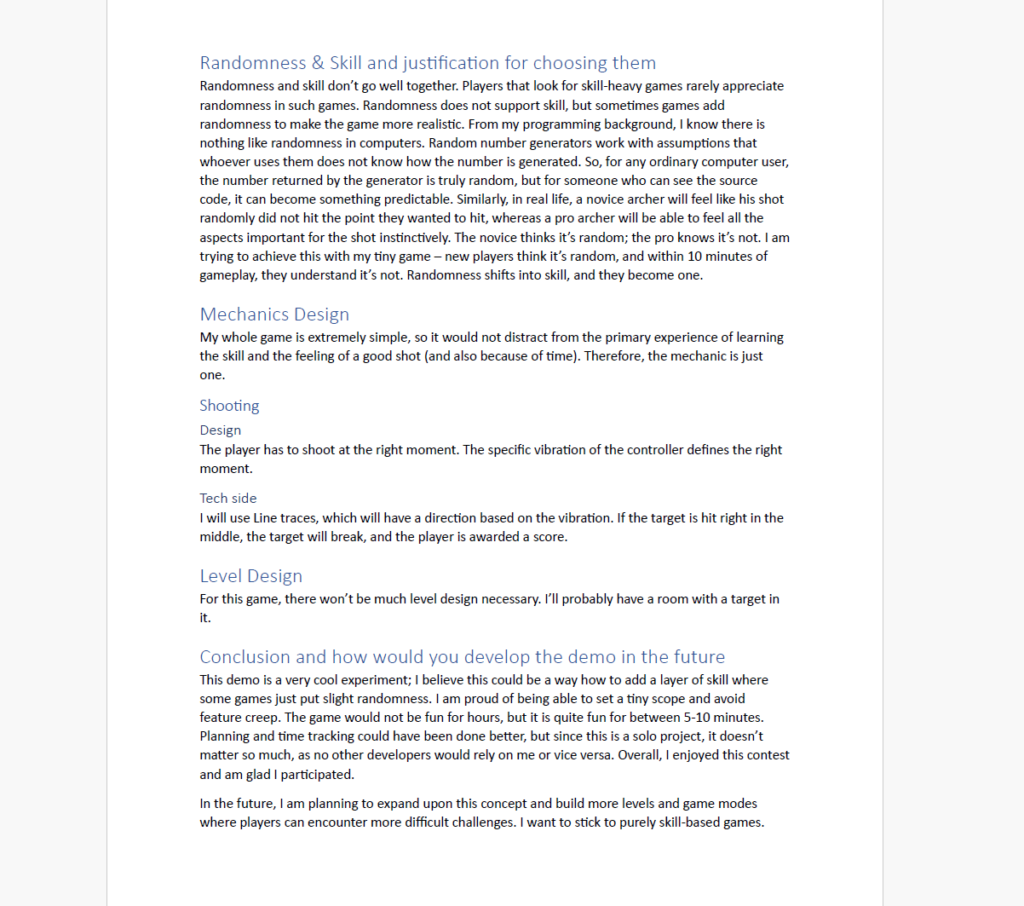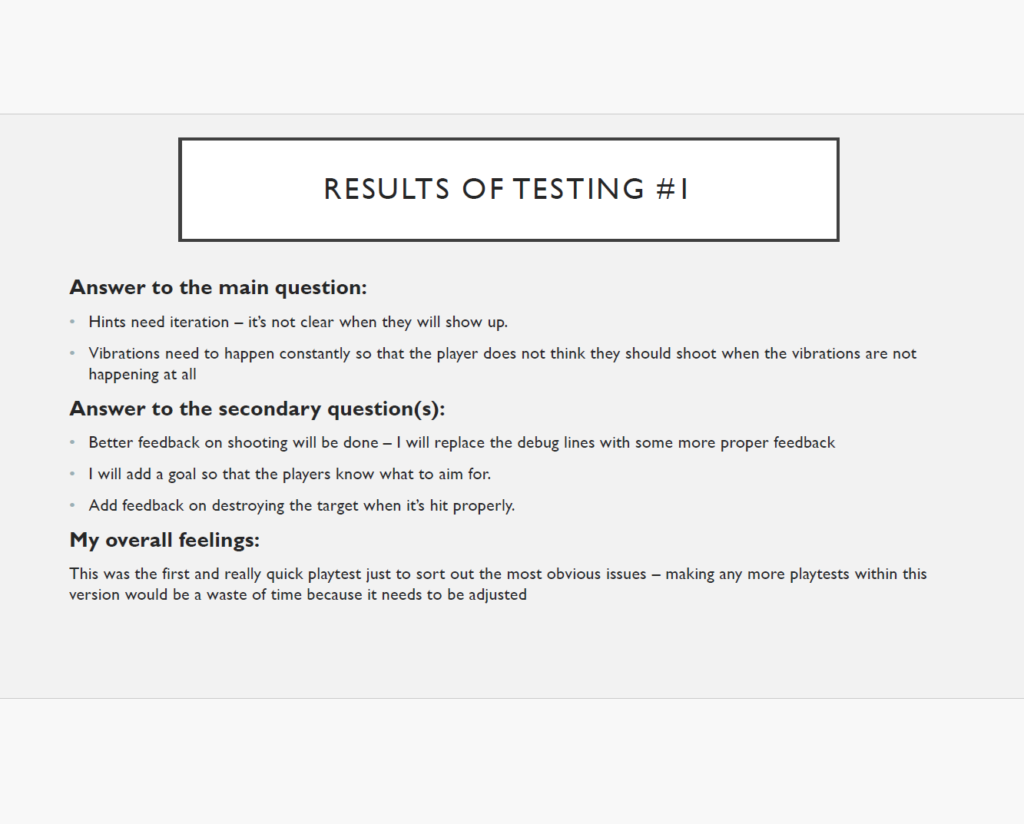Grads In Games Rising Star 2024 Game Design Entry
Skill and Randomness concept:
Game Design Entry for
Rising Star 2024

Project Brief Summary:
Design and prototype a game that successfully combines two ideas that don’t typically feature together in games.
2 Become 1 – Choose two basic starting points (e.g. genres, mechanics, objects) that don’t conventionally go together and design and prototype a game or mechanic based on two starting points coming together.
Projects are intended to take no more than 30 hours with documentation and planning included
My Project:
Project Aftermath:
My project was awarded with One To Watch badge.
What is One To Watch badge? “The OTW badge isn’t a ‘runner-up’ acknowledgement. It means that through your project and the assessment it became clear that you’re on the right track and that we believe you have the ability and potential to do really well in gamedev. You’ve created an excellent project that stood out, and you’ve shown an understanding of industry pipelines and aptitude in both technical and creative ability.” ~ from the organisers e-mail
Academic Review:
Fascinating concept and I like how they were able to simplify it down to it’s core for the prototype.
Read all feedback from my assessors
Blueprinting in UE 5
Feel free to look through the player blueprint above. You can use ctrl + scroll wheel to navigate around the blueprint. Read more below.
As the game was very tight both on the scope and on time, I did not focus on code efficiency but instead on getting it functional as soon as possible – after all, that’s what prototypes are all about. I put some effort into making my code readable, so I included comments; for the sake of this demonstration, I decided not to use functions as often as I usually do so you could see what my code actually looks like. Above, you can look through the main player graph.
In the Vibration section, you can see that every 1.2 seconds, a random integer value is chosen from 0 to 2. This value determines the intensity of the force feedback the player receives in their controller. This is easily expandable should you have more levels of vibration. I experimented with this during the development and discovered that players have difficulty differentiating amounts of vibration. Hence, the difference between each vibration level needs to be quite big. Important thing to know is that xbox controllers only support vibration levels from 0 – 1 which makes it quite limiting and was the ultimate reason why I only included 3 states.
I encourage you to go through the blueprint and if you have any questions about my implementation, please reach out to me.

Game Design Document showcase

Testing Document Showcase
Documentation & Planning | General
Part of the brief was to make planning and documentation. The documentation had to contain the following:
- Initial drafting for concept design & development
- Planning
- Written intro & outline of your objective
- Pre-production documentation
- Full design documentation
- Testing & iteration documentation
Additionally, we had to make a Final presentation video (see at the end of this page)
Design Documentation
- Elevator Pitch, Outline of Concept and USPs
- Initial Ideas/Pre-production
- The 2 Concepts and justification for choosing them
- Mechanic Design
- Level Design
- Player Testing and Iteration
- Conclusion and how would you develop the demo in the future
Planning
The approach I took was making a high-level plan. There were only 30 hours to invest in this project, so this seemed the most economical way. My estimates were based on previous experiences. Click here to download the planning pdf.
Playtesting & Iteration
I did multiple playtests and 2 iterations on the game/prototype. These playtesting sessions were spread out throught development and I believe they pushed the product to another level and are the reason why I got the One to Watch badge. You can read more about playtest in my playtesting document. Click here to download it.
